![]()
![]()
![]()
Use LEFT and RIGHT arrow keys to navigate between flashcards;
Use UP and DOWN arrow keys to flip the card;
H to show hint;
A reads text to speech;
10 Cards in this Set
- Front
- Back
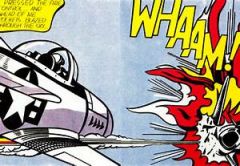
|
What? "Whaam!" When? 1963 Who? Roy Lichtenstein Why? Painting of comic strip, intensity of emotion/removed and technical way of drawingCold War Hyper masculine violence"Copied"Living in comicsGlorification of warCold mechanized warfaredetachment |
|
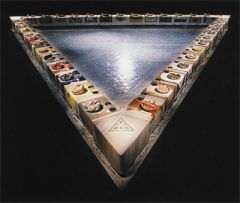
|
What? "The Dinner Party" When? 1979 Who? Judy Chicago Why? The Dinner Party comprises a massive ceremonial banquet, arranged on a triangular table with a total of thirty-nine place settings, each commemorating an important woman from history. The settings consist of embroidered runners, gold chalices and utensils, and china-painted porcelain plates with raised central motifs that are based on vulvar and butterfly forms and rendered in styles appropriate to the individual women being honored. The names of another 999 women are inscribed in gold on the white tile floor below the triangular table. her goal was to introduce the richness of women’s heritage into the culturerising symbol of liberation, up and down, currents of woman historypushing off table, women dont belong on tableinternational and national newsbrought women back into history books |
|
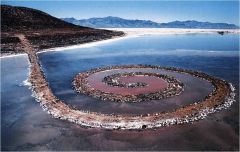
|
What? "Spiral Jetty" When? 1970 Who? Robert Smithson Why? art and placetraversing artworkpermanent fluxartwork directly in landscapenatural shape in unnatural settingunexpected permanencechange in natural environmentnuances of particular momentsephemerality |
|
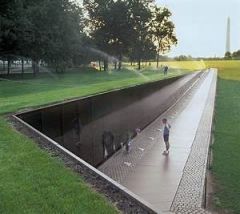
|
What? "The Vietnam Veteran's Memorial" When? 1982 Who? Maya Lin Why? names of dead in chronological order of deathreflective wall, linking past and presentRise and fall of wallWound healingrequires participation, touching it |
|
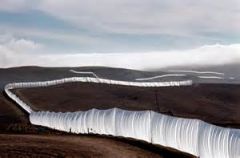
|
What? "Running Fence" When? 1976 Who? Christo and Jean-Claude Why? an 18-foot-high stretch of white, billowing nylon curtains that extended 24.5 miles along the hills of Sonoma and Marin counties for two weeks in September 1976. The sheer beauty of the light and weather playing across the fabric of the fence stood in sharp contrast to the underlying issue of division and limitations that fences generally convey. For Christo and Jeanne-Claude, the fence embodied larger issues of human freedom and constraint. togetherness jobs and material for residents |
|
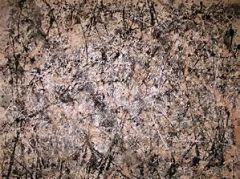
|
What? "Lavender mist" Who? Jackson Pollock When? 1950 Why? Action paining Paint poured and slapped onto unprimed canvas dripping dense layer of paint he's in the painting hand marks no focal point large in size envelope viewer sensory field stiffened brush motor control native americans dance-like rythm one with art process important bringing together mind and body |
|
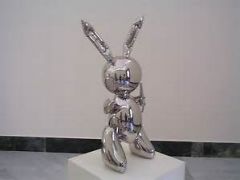
|
What? "Rabbit" Who?Jeff Koons When? 1986 Why? Stainless steal Easter Bunny light and soft vs rigidity and weight consumer culture indifference to audience desire for complexity, industrial readymade |
|
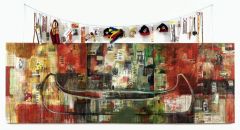
|
What? “Trade (Gifts for Trading Land with White People”
Who?Jaune Quick to See Smith When?1992 Why? contemporary inequities between US gov and Nat. Americans acquisition of the island of Manhattan by Dutch colonists in 1626 from unnamed Native Americans in exchange for goods worth 60 guilders or $24.00. especially the notion of private ownership of land—underlies Trade layers of history and complexity. reminiscent of a medieval altarpiece newspaper articles about Native life cut out from her tribal paper Char-Koosta, photos, comics, tobacco and gum wrappers, fruit carton labels, ads, and pages from comic books, all of which feature stereotypical images of Native Americans color red had multiple meanings for Smith, referring to her Native heritage as well as to blood, warfare, anger, and sacrifice Abstract Expressionist movement canoe suggests the possibility of trade and cultural connections—though this empty canoe is stuck, unable to move. Smith strung a clothesline from which she dangled a variety of Native-themed toys and souvenirs, especially from sports teams with Native American mascots. these cheap goods in exchange for the lands that were lost, reversing the historic sale of land for trinkets. These items also serve as reminders of how Native life has been commodified, turning Native cultural objects into cheap items sold without a true understanding of what the original meanings were. |
|
|
|
What?Guggenheim Museum Ny Who? Frank Lloyd Wright When?1956-1957 Why? disliked new york boxiness overbuilt overpopulated lacked architectural merit render the inherent plasticity of organic forms in architecture inverted ziggurat Wright whisked people to the top of the building via elevator, and led them downward at a leisurely pace on the gentle slope of a continuous ramp. The galleries were divided like the membranes in citrus fruit, with self-contained yet interdependent sections. The open rotunda afforded viewers the unique possibility of seeing several bays of work on different levels simultaneously. The spiral design recalled a nautilus shell, with continuous spaces flowing freely one into another. circles “it was to make the building and the painting an uninterrupted, beautiful symphony such as never existed in the World of Art before.” In conquering the static regularity of geometric design and combining it with the plasticity of nature |
|
|
|
|

